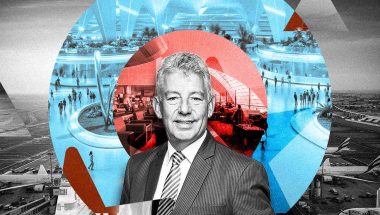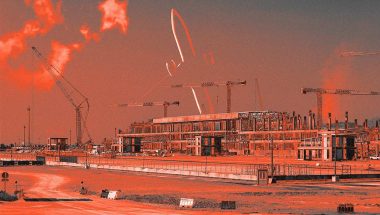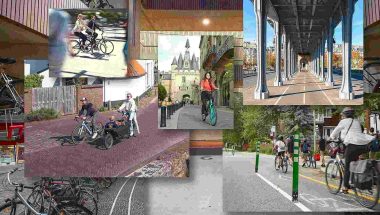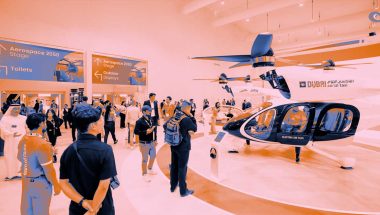- | 9:00 am
How Paul Griffiths is ensuring the world’s largest airport still feels personal
For Paul Griffiths, the next iteration of an airport in Dubai needs to elevate the travel experience rather than overwhelm the senses with technology alone.
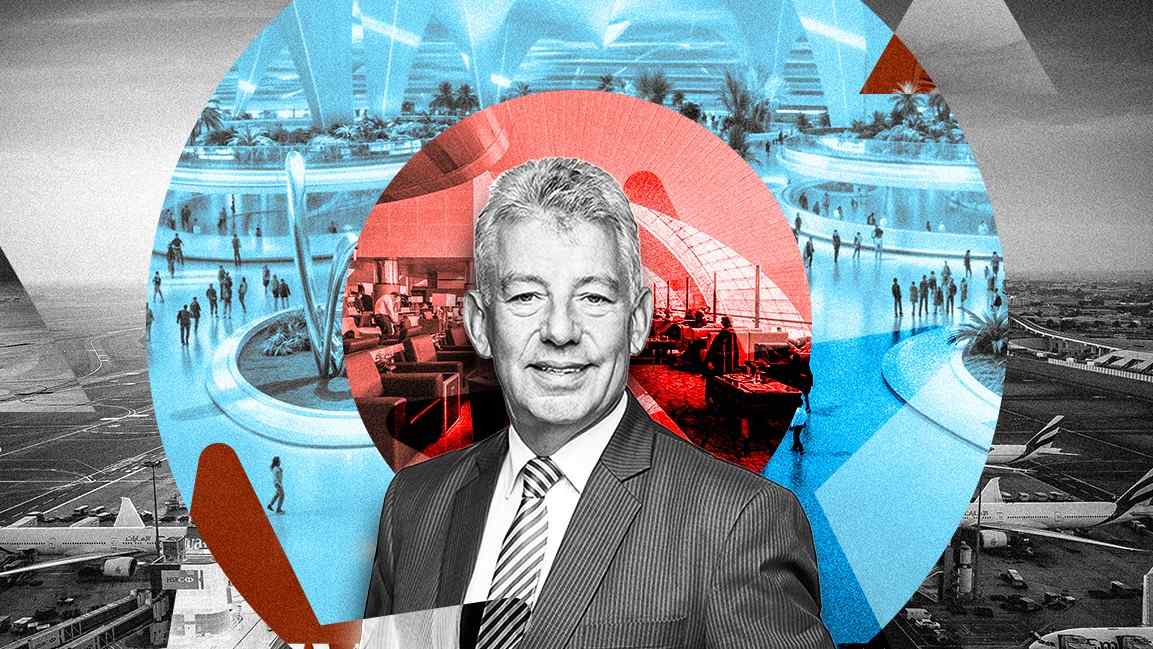
On a late afternoon in Dubai, the distant hum of airplanes drifts across the city’s most crucial and coveted landmark: DXB. At the heart of it all is Paul Griffiths, the visionary who has steered Dubai Airports through a period of rapid transformation over the last 18 years.
The room is quiet, but Griffiths’s imagination is anything but. He speaks of an airport that knows when you will arrive before you do, that adjusts its temperature based on sunlight streaming across the concourse, and that guides your aircraft to the closest gate for your connecting flight because AI has already mapped your onward journey.
“Airports shouldn’t just move people,” he says, smiling. “They should anticipate their needs, optimise themselves instinctively, and behave like living, learning cities.”
This vision of a sentient airport drives Dubai’s ambition to build the world’s largest aviation hub. It is conceived not merely as a place of transit, but as a living ecosystem that thinks, learns, and adapts. This system aims to redefine sustainability, transform human mobility, and reshape our very relationship with travel. Griffiths is determined to make that vision real.
A SUSTAINABILITY SHOWCASE THAT LOOKED ROUTINE, ALMOST IMPOSSIBLE
At the Dubai Airshow, Griffiths revealed what he calls a proof of possibility: airport ground operations powered entirely by sustainable energy. In partnership with dnata, flydubai, and more than 30 organisations, Dubai Airports introduced the world’s first Sustainability Showcase, a live demonstration of what a cleaner aviation future can look like.
Across two immersive zones, Decarbonizing Airports and The Future of Flight, the showcase presented sustainable turnarounds, electric and hydrogen vehicles, biofuels, advanced energy management, and circular systems in real-time operation.
“We’re showing it’s possible to power every part of ground operations with hydrogen, electric, or hybrid systems,” he says. “When people see it in a live environment, they realise this isn’t theoretical. It’s achievable with the will, the resources, and the drive.”
DXB itself has already become a sustainability sandbox.
“We’ve got one of the largest solar PV arrays in the Middle East. We’ve replaced 150,000 light bulbs. We’re recycling waste, converting cooking oil into energy, improving HVAC controls, and hundreds or thousands of incremental efforts pushing us toward a more sustainable future.”
This mindset is shaping every design choice at the future DWC (Al Maktoum International Airport).
NET ZERO IN THE AIR IS THE INDUSTRY’S MOONSHOT
Griffiths is realistic about what’s within reach today. “On the ground, decarbonisation is straightforward. In the air, the challenge is far harder. Nothing is as calorifically dense as a litre of Jet A-1.”
He cites the staggering scale of aviation’s fuel appetite: “Globally, we consume 1.019 million tonnes of jet fuel every day, up 68,000 tonnes daily in just the last year. And yet the world produced only enough SAF last year to power aviation for 50 hours.”
His solution is sweeping but simple. Governments should introduce a small supplement to every litre of jet fuel. This guarantees demand, attracts investment, increases supply, and eventually closes the price gap. He likens the trajectory to the rise of solar, where policy intervention unlocked commercial viability.
TEACHING AN AIRPORT TO THINK
For Griffiths, the application of AI represents a shift as significant as the introduction of jet engines. “Scale is the enemy of airports,” he says. “People hate long walks, queues, and anxiety. AI lets us overcome that.”
Instead of a single megastructure, DWC Phase Two is being designed as eight interconnected intelligent nodes, each functioning like a 30-million-passenger airport.
For Griffiths, connectivity becomes choreography.
“If an aircraft from Melbourne has 100 people connecting to London, 100 to New York, 20 to Frankfurt, we can bring those departing flights onto the same node. It feels like a 30-million-passenger airport, not the world’s largest.”
He calls it “intimacy at scale,” a phrase that captures the paradox that will soon come to light.
THE ZERO-QUEUE AIRPORT
Griffiths believes queues reflect a failure of design. “Let’s remove them. Check-in, security, immigration. All of it.” His team is already testing invisible biometrics, allowing travelers to walk through the process without presenting a passport. What takes 40 minutes could take 10.
The outcome is more than convenience. If four times the number of passengers move through the same footprint, capacity multiplies without new construction. Technology becomes the latest form of expansion.
DESIGNING FOR EVERY HUMAN EXPERIENCE
Griffiths often talks about airports as emotional environments. He has seen how people who are anxious, elderly, neurodiverse, or simply overstimulated experience travel differently.
“At DXB, we’ve tested everything: comfort dogs, sunflower lanyards, intuitive wayfinding. Not every disability is visible. Our infrastructure has to work for everyone.”
DWC will incorporate these lessons from the very beginning.
“We are in the hospitality business,” he says. “Airlines deliver exceptional service in a small space. We must deliver the same quality across the entire journey.”
PREPARING FOR A SKYSCAPE FILLED WITH eVTOLS
Dubai isn’t waiting for flying taxis but is now working towards building for them.
“Airspace is three-dimensional, which is our advantage. Conventional aircraft climb fast; eVTOLs operate at 1,000–2,000 feet. With the right lateral and vertical separation, integration is completely feasible.”
The operating system will resemble a familiar mobility platform. “Think Uber in the sky. eVTOLs will follow pre-programmed corridors in a computer-controlled network that auto-separates them.”
The machines themselves, he says, are stunning. “They’re quiet, smooth, and efficient. When you watch one transition to level flight, you know you’re seeing the future.”
On the Hyperloop, however, he doesn’t mince words.
“It will never be a reality. Nature abhors a vacuum, and if a capsule traveling 400 mph loses vacuum, it is like hitting a brick wall. I wouldn’t want to be in it.”
THE DECISION THAT COULD TRANSFORM GLOBAL AVIATION
When asked what single decision would most transform Dubai Airports’ competitive position in the next 18 months, Griffiths doesn’t talk about technology. He talks about freedom.
“Governments need to recognise aviation as a force for good and relax bilateral restrictions.”
The potential impact is staggering. “Dubai is four hours from a third of the world’s population and eight hours from two-thirds. If we could fly to every city in that radius, mobility could literally change lives.”
This, in his eyes, is aviation’s greatest untapped superpower.
THE FIRST COGNITIVE AEROTROPOLIS
As our conversation winds down, Griffiths looks toward the model of the future DWC. It’s silent, inert, still, yet he speaks of it as if it already has a pulse.
He imagines an airport that adjusts cooling in the evening heat, predicts transfer needs before passengers land, directs eVTOLs with precision, and transforms data, sunlight, and movement into a seamless system.
“If you design an airport to learn, you design it to last,” he says quietly. And suddenly, you realise his ambition goes far beyond aviation.
He’s not trying to build the world’s largest airport.
He is attempting to create the first cognitive aerotropolis, where technology, sustainability, and human experience converge.







